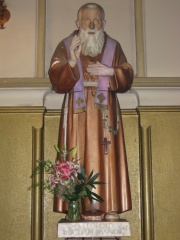
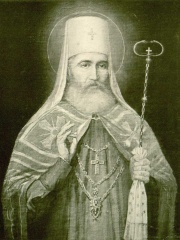
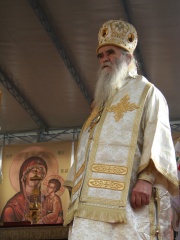
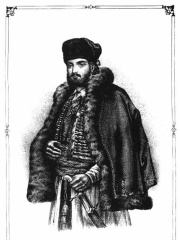
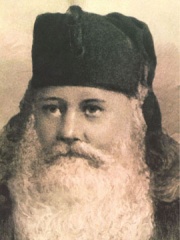
The Most Famous
RELIGIOUS FIGURES from Montenegro
This page contains a list of the greatest Montenegrin Religious Figures. The pantheon dataset contains 3,187 Religious Figures, 6 of which were born in Montenegro. This makes Montenegro the birth place of the 54th most number of Religious Figures behind Morocco, and South Korea.
Top 6
The following people are considered by Pantheon to be the most legendary Montenegrin Religious Figures of all time. This list of famous Montenegrin Religious Figures is sorted by HPI (Historical Popularity Index), a metric that aggregates information on a biography's online popularity.

1. Leopold Mandić (1866 - 1942)
With an HPI of 66.93, Leopold Mandić is the most famous Montenegrin Religious Figure. His biography has been translated into 21 different languages on wikipedia.
Leopold Bogdan Mandić [Mandich], OFMCap (also known as Leopold of Castelnuovo, Italian: Leopoldo da Castelnuovo; 12 May 1866 – 30 July 1942) was a Croatian Capuchin friar and Catholic priest, who suffered from disabilities that would plague his speech and stature. He developed tremendous spiritual strength in spite of his disabilities and became extremely popular in his ministry as a confessor, often spending 12–15 hours in the confessional. Although Mandić wanted to be a missionary in Eastern Europe, he spent almost all his adult life in Italy, living in Padua from 1906 until his death. He also spent one year in an Italian prison during World War I, since he would not renounce his Croatian nationality. He dreamed unceasingly about reuniting the Catholic and Orthodox churches and going to the Orient. He became known as an Apostle of Confession and an Apostle of Unity.

2. Petar I Petrović-Njegoš (1748 - 1830)
With an HPI of 63.27, Petar I Petrović-Njegoš is the 2nd most famous Montenegrin Religious Figure. His biography has been translated into 21 different languages.
Petar I Petrović-Njegoš (Serbian: Петар I Петровић Његош; 1748 – 31 October 1830) was the Prince-Bishop of Montenegro from 1784 to 1830 and Exarch (legate) of the Serbian Orthodox Church in Montenegro. He was the most popular spiritual and military leader from the Petrović dynasty. During his long rule, Petar strengthened the state by uniting the often quarreling tribes, consolidating his control over Montenegrin lands, introducing the first laws in Montenegro in 1798. His rule prepared Montenegro for the subsequent introduction of modern institutions of the state: taxes, schools and larger commercial enterprises. He was canonized by the Serbian Orthodox Church as Saint Peter of Cetinje (Serbian: Sveti Petar Cetinjski / Свети Петар Цетињски).

3. Amfilohije Radović (1938 - 2020)
With an HPI of 62.08, Amfilohije Radović is the 3rd most famous Montenegrin Religious Figure. His biography has been translated into 24 different languages.
Amfilohije (Serbian Cyrillic: Амфилохије; pronounced [amfilɔ̌xijɛ râːdɔv̞itɕ], English: Amphilochius; born Risto Radović, 7 January 1938 – 30 October 2020) was a bishop of the Serbian Orthodox Church, theologian, university professor, author and translator. He was first the Bishop of Banat between 1985 and 1990, and then the Metropolitan Bishop of Montenegro and the Littoral from 1990, until his death. As the metropolitan bishop, he was the primate of the Serbian Orthodox Church in Montenegro. He was one of the most influential leaders of the Serbian Church, and was among the three candidates for the Serbian patriarchate both in 1990 and 2010. Amfilohije's honorary and liturgical title was: His Grace, Archbishop of Cetinje, Metropolitan of Montenegro and the Littoral, of Zeta, Brda (the Highlands) and the Skenderija, and the Exarch of the Holy Throne of Peć. More than 569 churches and monasteries of the Serbian Orthodox Church in Montenegro were built or reconstructed during his reign. A noted theologian and author, his bibliography consists of more than 1,000 items and his selected works were published in 36 volumes. Amfilohije was described as one of the most powerful people in Montenegro, as well as one of the most influential individuals within the Bishops' Council of the Serbian Orthodox Church, the supreme body of the Serbian Orthodox Church.

4. Danilo I, Metropolitan of Cetinje (1670 - 1735)
With an HPI of 61.58, Danilo I, Metropolitan of Cetinje is the 4th most famous Montenegrin Religious Figure. His biography has been translated into 17 different languages.
Danilo I Petrović-Njegoš (Serbian Cyrillic: Данило I Петровић-Његош; 1670 – 11 January 1735) was the Metropolitan of Cetinje between 1697 and 1735, the first de facto vladika of Montenegro, and the founder of the House of Petrović-Njegoš—which ruled Montenegro from 1697 to 1918. He restored the Cetinje Monastery and initiated the struggle for the liberation of Montenegro from Ottoman rule. He was also known by the patronymic Danilo Šćepčević.
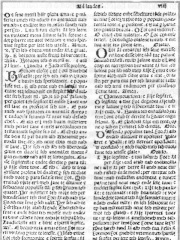
5. Gjon Buzuku (1499 - 1577)
With an HPI of 59.79, Gjon Buzuku is the 5th most famous Montenegrin Religious Figure. His biography has been translated into 18 different languages.
Gjon Buzuku (c. 1499 – c. 1577) was an Albanian Catholic priest and a prominent Old Albanian author from the Renaissance, who wrote the first known printed book in Albanian. Commonly referred to as the Missal, this book is considered an important monument of Albanian studies, being the oldest source for studying the Albanian language.

6. Sava Petrović (1702 - 1782)
With an HPI of 58.60, Sava Petrović is the 6th most famous Montenegrin Religious Figure. His biography has been translated into 16 different languages.
Sava Petrović (Serbian Cyrillic: Сава Петровић; 18 January 1702 – 9 March 1782) was the Metropolitan of Cetinje between 1735 and 1781, ruling what is known in historiography as the Prince-Bishopric of Montenegro; the polity in the hands of the Petrović-Njegoš dynasty. He succeeded his relative Danilo I as Metropolitan in 1735, having served as Danilo's coadjutor since the 1719, when he was consecrated by Serbian Patriarch Mojsije I. Sava was a lesser memorable figure in Montenegrin history, having served during a period of constant and bitter tribal rivalries and power struggles in tribal leadership.
People
Pantheon has 6 people classified as Montenegrin religious figures born between 1499 and 1938. Of these 6, none of them are still alive today. The most famous deceased Montenegrin religious figures include Leopold Mandić, Petar I Petrović-Njegoš, and Amfilohije Radović.
Deceased Montenegrin Religious Figures
Go to all RankingsLeopold Mandić
1866 - 1942
HPI: 66.93
Petar I Petrović-Njegoš
1748 - 1830
HPI: 63.27
Amfilohije Radović
1938 - 2020
HPI: 62.08
Danilo I, Metropolitan of Cetinje
1670 - 1735
HPI: 61.58
Gjon Buzuku
1499 - 1577
HPI: 59.79
Sava Petrović
1702 - 1782
HPI: 58.60
Overlapping Lives
Which Religious Figures were alive at the same time? This visualization shows the lifespans of the 4 most globally memorable Religious Figures since 1700.

